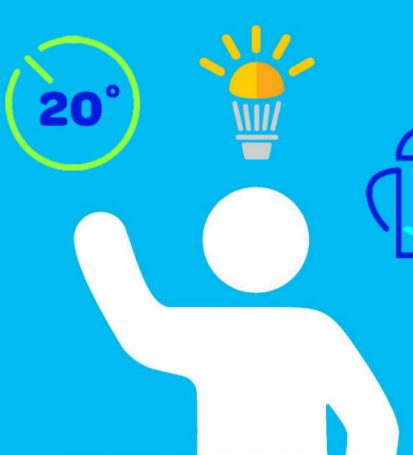
Think Energy Efficiency!
Airconditioning in Buildings
In the case of a simple split unit AC, the compressor is either off or on. It works at its full capacity and uses full rated energy. But in an Inverter AC, it works just the opposite. An Inverter AC controls the speed of the compressor motor so as to regulate the temperature continuously. It is more effective and uses less power than a normal AC. An inverter Air Conditioner never turns off the compressor or the motors. It cools or heats the room constantly by maintaining the speed of the motors by adapting the load of the room. As a result, the energy efficiency is improved.
Due to the inversion mechanism, the inverter AC can start at low voltage without giving extra pressure to the motors or to the power system. They save lots of energy by running at partial capacity. It is designed in such a way that it can save 30-35% of electricity over a normal air conditioner. The units of an inverter AC work at variable speeds which enables it to adjust its tonnage as per the size of the room. The compressor first converts the input power of the AC to DC power to be able to vary the frequency of the power input.
The inverter AC technology uses a variable speed compressor to save energy and power up to 30-35% more than a normal or non-inverter AC. It runs at the full capacity until the fixed temperature achieved and runs at part load to maintain that temperature. Overall an inverter AC maintains the room temperature very well.
ERV – Energy Recovery Ventilator system is a system in which the indoor air is clean of pollutants, but at the same time these systems circulate fresh air from outside into the building. They clean the incoming fresh air. ERV systems throw out all the impure air from inside the building. The occupant feels as though the windows are opened and fresh air is gushing in. But the rooms are still as cool as required and the air is dry without excess humidity. Getting fresh air into the building improves indoor air quality. It helps in flushing out pollutants, everything from pollen and dirt to bacteria and viruses.
ERV is a simple appliance that is installed with the existing HVAC system. It is installed between the air outlet duct and the air inlet duct of the building
The inlet ducts send the polluted, stale air into to the device. The outlet duct draws in fresh air from outside. Inside the ERV, a transfer happens. The ERV dehumidifies the fresh air coming in. It sends that moisture to the exhaust side. It also uses a heat transfer process to move the heat that is in the in- coming air, to the air going out. This action of the ERV device is actually close to the air conditioning process itself. This is the reason why the Energy saving happens in this system. To cool the air in the building, warm air passes over a coil that extracts the heat and provides the building with colder air.
The last step of the ERV is air purification. The system uses an MERV (Minimum Efficiency Reporting Value) filter having a much higher MERV rating than the regular AC filters. The filter ensures that the incoming air is much cleaner than the usual filters in the AC system.
